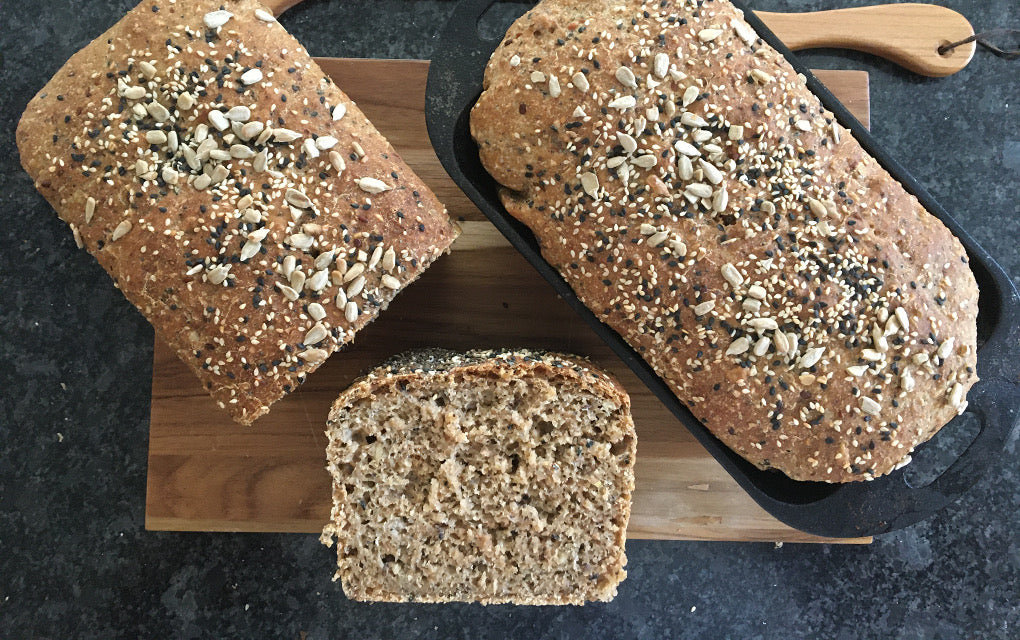This recipe for Steiner Brot (bread) is our adaption of Hans Röckenwagner's recipe in Das Cookbook. But Röckenwagner also adds both sourdough starter and yeast to make what he calls “a slightly lighter loaf than the original Steiner.”
History of Steiner Brot
Rudolf Steiner, who was an early twentieth-century Austrian philosopher and reformer. According to a Wikipedia post, "He founded a number of schools… [that] later evolved into a worldwide school network. He also founded a system of organic agriculture, now known as biodynamic agriculture, which was one of the first forms of modern organic farming, …his medical ideas led to the development of a broad range of complementary medications and supportive artistic and biographic therapies, [but are now] considered ineffective by the medical community. Numerous homes for children and adults with developmental disabilities based on his work…are found in Africa, Europe, and North America. His paintings and drawings influenced Joseph Beuys and other modern artists. His two Goetheanum buildings are considered significant examples of modern architecture, and other anthroposophical architects have contributed thousands of buildings to the modern scene."
But Steiner was also a vegetarian and health-food guru. And was known "for combining rye flour, honey, and water to make a bread base without any leavening agents like sourdough starter.” His recipe calls for leftover bread as part of that base, which probably improved the flavor some.
Our Adaptation
In Das Cookbook, Röckenwagner adds both a sourdough starter and yeast to make what he calls “a slightly lighter loaf than the original Steiner.” But our recipe uses only sourdough for leavening and we suggest a long, slow rise in the refrigerator overnight. This method helps the bread stay moist and fresh for several days. And we use Abigail's Oven Jewish Rye bread crumbs for the leftover bread in this recipe.
Ingredients |
Instructions |
Steiner Base
|
|
Dough
|
|
Oat-Seed Topping
|
|
The recipe makes two standard bread-pan loaves, which we used, but a more extended Pullman pan would made a beautiful sandwich loaf to last a week.
What is your favorite rye bread recipe? and would you share it in the comment section below.

Author: Darryl Alder lives with his wife in Riverside Lodge, which is their home, along the Provo River in Utah. Together they adopted and raised four children, all of whom are now adults. He is a retired career Boy Scouter and outdoorsman who spent many hours over a campfire using a Dutch oven and loves sharing recipes for the kitchen and the campfire alike. You can read many of his recipes on this site by searching for Sourdough Saturday or Recipes on this blog and at YourSourdoughStart.com.

